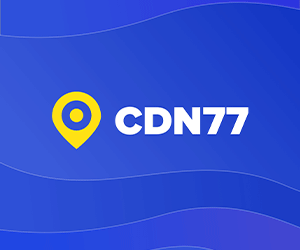Ever needed to grab a file off your work computer while on the road, or help a family member with computer issues from afar? That’s where remote desktop tools come to the rescue! They let you take control of another computer as if you were sitting right in front of it.
While the classic Windows Remote Desktop Protocol (RDP) is a built-in option, there are more powerful third-party solutions like AnyDesk and TeamViewer that offer greater versatility and features. Let’s break down which might work best for you.
What Makes a Great Remote Connection Solution?
Here’s what to look for when selecting your ideal remote desktop solution:
- Speed and Performance: Smooth screen sharing with minimal lag is crucial for a pleasant user experience.
- Security: Robust data encryption and authentication keep your remote connections secure from prying eyes.
- User-Friendliness: An intuitive interface matters for both technicians and the people they help.
- Features: File transfer, remote printing, chat, mobile device support, and similar extras expand how you can use the software.
- Pricing: Different use cases demand different plans, from free personal solutions to enterprise-level subscriptions.
AnyDesk

AnyDesk is a remote desktop tool that stands out for its speed. Powered by the DeskRT codec, it minimizes lag and ensures a smooth, responsive experience. The software itself is remarkably lightweight, allowing for fast downloads and minimal impact on your system. What’s more, AnyDesk supports a wide range of devices and operating systems, giving you flexibility across platforms.
While some users occasionally experience connection drops, and the free version might be missing some bells and whistles desired by power users, AnyDesk offers a compelling package for those demanding fast and efficient remote access.
TeamViewer

TeamViewer is a powerhouse of features designed for professional remote support. Beyond basic remote control, it offers remote printing, seamless multi-monitor navigation, and even screen recording. Connections are renowned for their reliability, ensuring your remote help sessions are uninterrupted. Plus, TeamViewer excels at integrating with ticketing systems and helpdesk platforms, streamlining workflows for IT support teams.
However, be aware that it can be more resource-intensive than some lighter-weight options. Additionally, while its complex pricing plans cater to businesses, they may be unnecessarily complicated for individual users who simply need occasional remote access.
Windows Remote Desktop Protocol (RDP)

Windows Remote Desktop is a built-in tool in most Windows versions, offering a convenient solution for basic remote access. It performs well within local networks. However, it does necessitate some configuration, potentially involving firewall settings and router adjustments.
If you need advanced features or plan to connect over slower internet connections, Windows Remote Desktop might not cut it. You’ll likely find dedicated third-party remote desktop software provides a smoother and more feature-rich experience.
Remote Desktop Tools Comparison
| Feature | Remote Desktop (Windows) | AnyDesk | TeamViewer |
|---|---|---|---|
| Platforms | Built into Windows; also available on macOS, Android, iOS | Windows, macOS, Linux, Android, iOS, and more | Windows, macOS, Linux, Android, iOS, and more |
| Focus | Basic remote access within Windows environments | Speed and cross-platform compatibility | Professional features and support workflows |
| Cost | Free with Windows Pro and Enterprise | Free for personal use; paid plans for businesses | Paid plans for businesses; limited free version |
| Speed | Decent on local networks, can lag over the internet | Very fast thanks to DeskRT codec | Generally fast, occasional performance hiccups reported |
| Ease of setup | Requires some network configuration | Quick and simple setup | Easy setup, but more options can be complex |
| Features | Basic remote control, file transfer | Remote control, file transfer, unattended access, mobile support | File transfer, remote printing, chat, screen recording, extensive helpdesk integrations |
So, Which Should You Choose?
Here’s a quick guide to simplify your decision:
- For fast connections and simple use: AnyDesk is often the quickest pick.
- For maximum features and integrations: TeamViewer offers unparalleled power.
- For casual use within a Windows environment: RDP might suffice.
Always Test Before You Commit
Whichever platform you’re considering, try it out first! Most services offer free trials or personal use versions. See how the software feels for your specific setup and needs. The ‘best’ remote desktop tool depends heavily on your specific requirements.
Bijay Pokharel
Related posts
Recent Posts
Advertisement
Subscribe

Cybersecurity Newsletter
You have Successfully Subscribed!
Sign up for cybersecurity newsletter and get latest news updates delivered straight to your inbox. You are also consenting to our Privacy Policy and Terms of Use.









